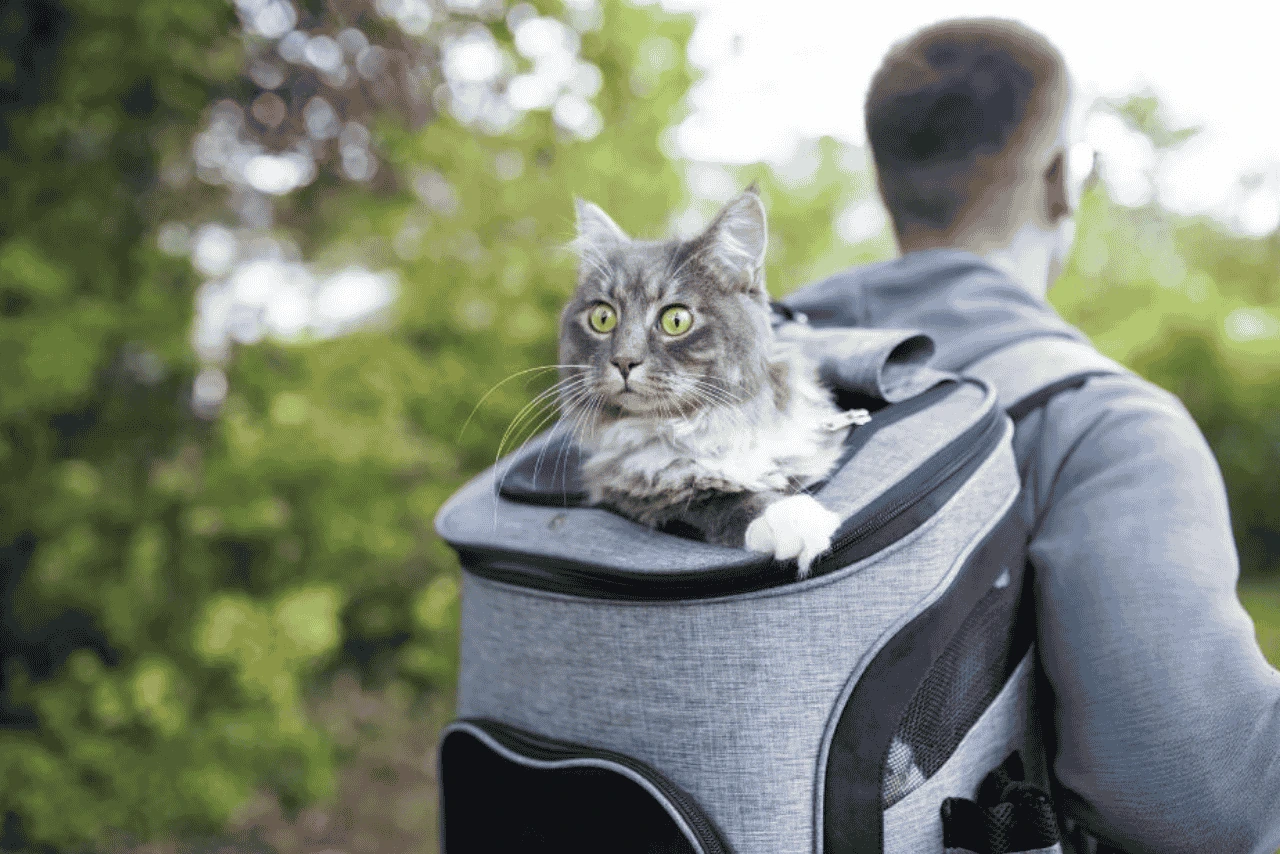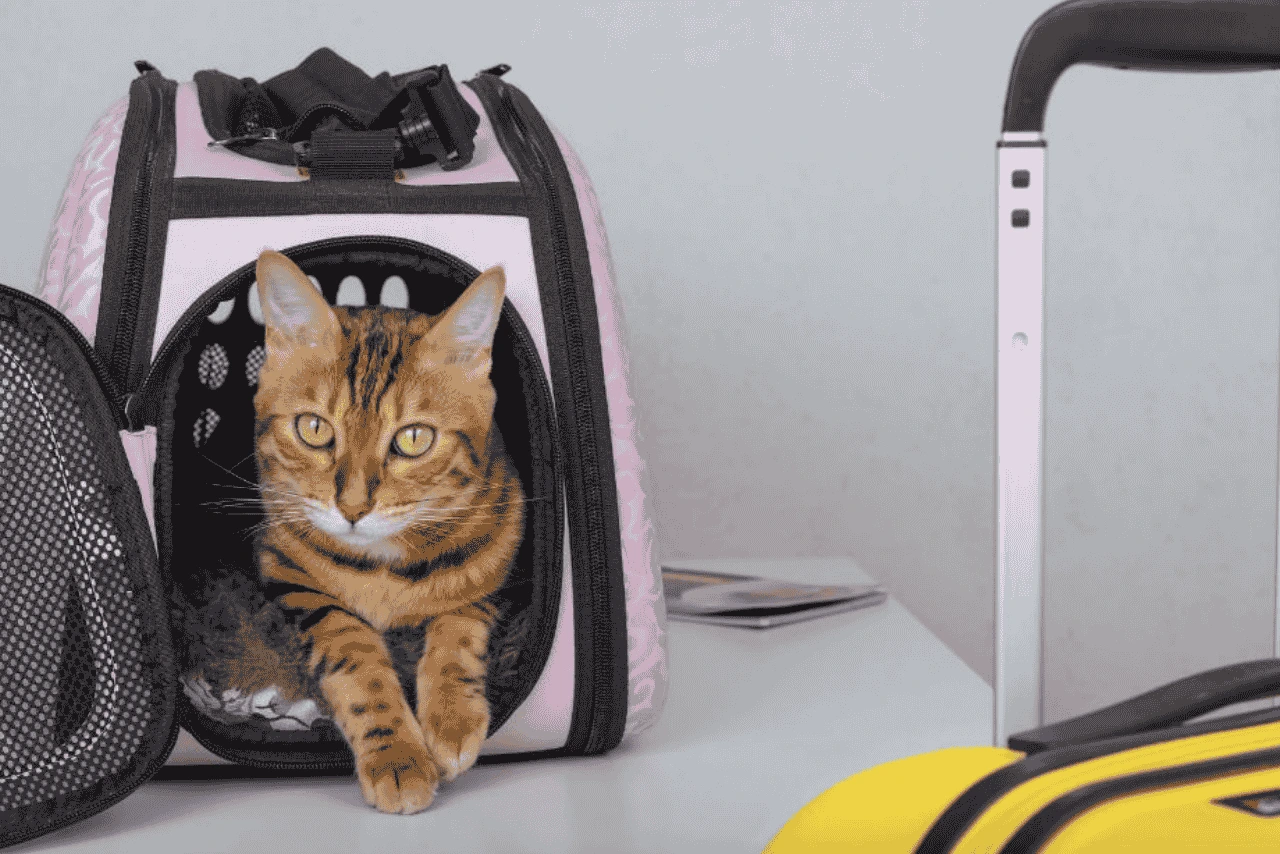Traveling with a cat over long distances can be a stressful experience for both the pet and the owner. Whether you are moving to a new city, traveling for a long vacation, or relocating internationally, it is vital to take care of your kitty’s comfort, safety, and well-being.
In this ultimate guide, we will talk about everything you need to know to make long-distance cat transportation smooth, safe, and hassle-free.
Understanding Your Cat's Travel Needs
Cats are creatures of habit, and they thrive in familiar environments. Sudden changes in surroundings can cause stress and anxiety, making proper preparation essential. Before going for a long distance trip, observe your cat's temperament, medical history, and travel behavior.
Note that cats that are easily stressed may need veterinary support or calming techniques during transit.
Choosing the Right Cat Carrier
A durable and comfortable cat carrier is non-negotiable for long-distance cat travel. It should be:
- IATA-approved if traveling by air.
- Large enough for your kitty to stand, turn around, and lie down.
- Properly ventilated on all sides.
- Lined with an absorbent pad or towel for accidents.
- Equipped with a secure locking mechanism.
Hard-sided carriers are often preferred for their protection and stability. Make your cat accustomed to the carrier early and allow it to spend time in it to reduce fear and resistance.
You might also be interested in: How to Choose the Best Dog Carrier
Pre-Travel Preparation: Vet Visits and Documentation
Before a long-distance transport with a cat, schedule a health check-up with your veterinarian. The vet will make sure that your cat is fit for travel and may issue:
- A health certificate (mandatory for air travel and international transport).
- Vaccination records including rabies and feline distemper.
- Microchip registration for identification.
- Prescribed sedatives or calming aids, if necessary.
Always carry a copy of medical records, especially when crossing state or country borders.
Feeding and Hydration Before Travel
To prevent nausea, avoid feeding your cat right before departure. Feed them four to five hours prior to travel. Provide a small amount of water closer to travel time. For long journeys, portable, spill-proof bowls can be attached to the carrier. Always keep fresh water on hand.
Road Travel: Tips for Driving with a Cat
If you’re traveling with your cat by car, these tips can help:
- Keep the carrier secured with a seatbelt or wedged between seats.
- Never let the cat roam freely inside the car.
- Maintain a comfortable temperature and avoid loud music or sudden movements.
- Take breaks every 3-4 hours to check on your kitty and offer water.
- Never leave your kitty alone in a parked car, even for a minute.
Use pheromone sprays like Feliway inside the carrier to help reduce stress during the drive.
Air Travel: Flying with Your Cat Long Distance
Traveling with a cat by air involves more regulations and planning:
- Book a direct flight whenever possible to avoid long layovers.
- Check airline policies on pet travel and cabin vs. cargo options.
- If flying in-cabin, the carrier must fit under the seat in front of you.
- Attach labels to the carrier with your contact information and destination.
- Avoid tranquillizing your cat unless prescribed by a veterinarian.
- Line the carrier with pee pads in case of accidents.
Many airlines limit the number of pets per flight, so reserve early to secure a spot.

Train and Bus Travel: What You Need to Know
Some train and bus companies allow cats, but restrictions vary:
- Some permit small pets under 20 lbs on select routes (within carriers).
- Some trains and buses do not allow pets, except service animals.
- Always call ahead and verify pet policies.
- Prepare for longer durations and bring extra supplies, including food, water, and waste bags.
Overnight Stays and Accommodations
If you are doing overnight stops, ensure your accommodation is pet-friendly. There are many pet friendly websites and hotels for help. Check the room thoroughly upon arrival, secure windows, remove toxic plants, and block off small hiding spaces. Set up a temporary litter area and keep the carrier open so your kitty feels secure.
Packing Checklist for Long-Distance Cat Travel
Here’s what to bring:
- Cat carrier with ID tags
- Absorbent pads and familiar bedding
- Dry/wet food and treats
- Bottled water
- Collapsible food and water bowls
- Disposable litter tray and litter
- Waste bags and cleaning wipes
- Vet records and health certificate
- Medications, if prescribed
- Calming sprays or diffusers
Dealing with Anxiety During Cat Transport
To keep your kitty calm:
- Use natural calming sprays or plug-in diffusers.
- Play soothing music at low volume.
- Offer toys or comfort items from home.
- Keep talking to your cat in a calm tone.
- Cover the carrier with a light cloth to reduce stimuli.
Avoid excessive handling during transit, as it may increase anxiety.
Arriving at Your Destination
Upon arrival:
- Set up a quiet room with familiar items.
- Gradually introduce your cat to new areas.
- Keep them indoors until they’re fully acclimated.
- Resume regular feeding and play schedules to establish routine.
- Monitor for signs of stress or illness and contact a vet if needed.
When to Use Professional Pet Transport Services
For long-haul or overseas pet transport, consider hiring professional pet transport companies. These experts handle all logistics including:
- Paperwork and regulations.
- Carrier specifications.
- Airport handling and customs.
- Door-to-door delivery.
Look for companies accredited by IPATA (International Pet and Animal Transportation Association).
Conclusion: How to Transport a Cat Long Distance
Transporting a cat over a long distance doesn’t have to be daunting. With thorough preparation, the right gear, and patience, you can ensure a safe experience for your feline companion. Prioritise your cat’s comfort and well-being at every stage, and the travel will be smoother for both of you.
Choose JCS Pet Travel for Pet Shipping Services
With over 20 years of experience, JCS Pet Travel offers premium pet transport services by handling all paperwork, vaccinations, and secure travel arrangements. Our temperature-controlled, satellite-tracked vehicles are best for pet’s comfort and safety. Our experts treat your pet like family every step of the way.
Pet Transport Services with JCS Pet Travel
Traveling with your pet? Let JCS Pet Travel handle it. With over 20 years of experience, we offer safe, stress-free pet transport services for dogs, cats, birds and even for your rabbit, across the UK and worldwide.
Recommended topics:
